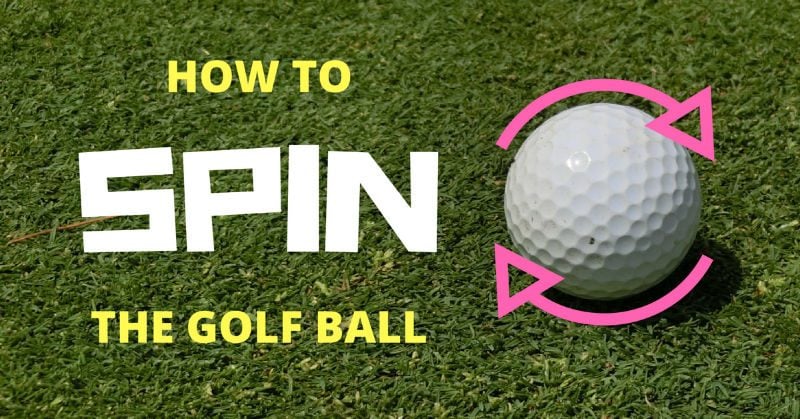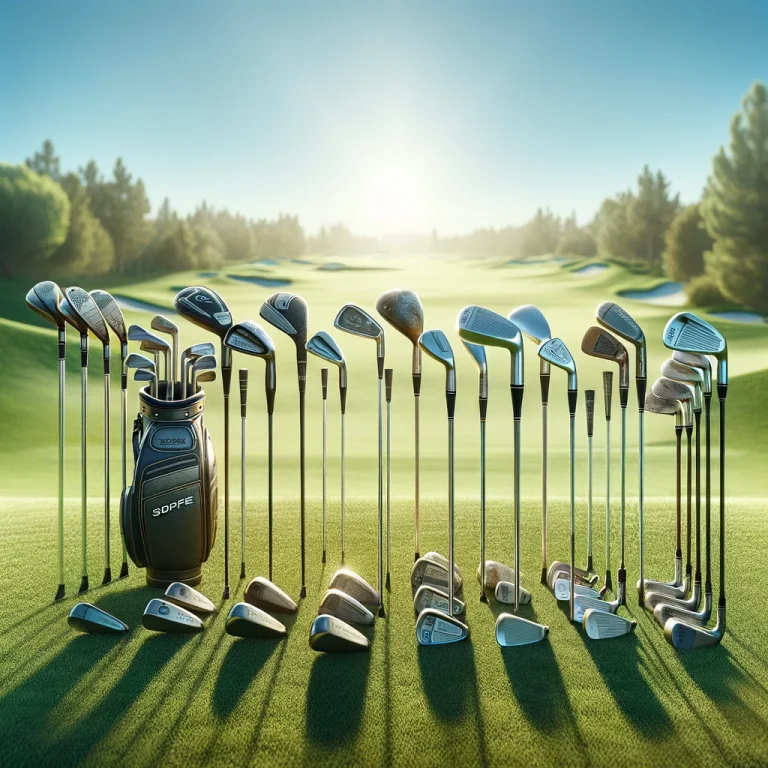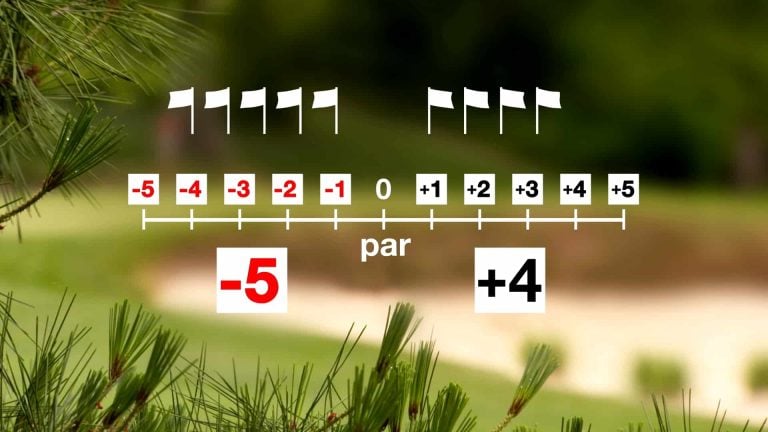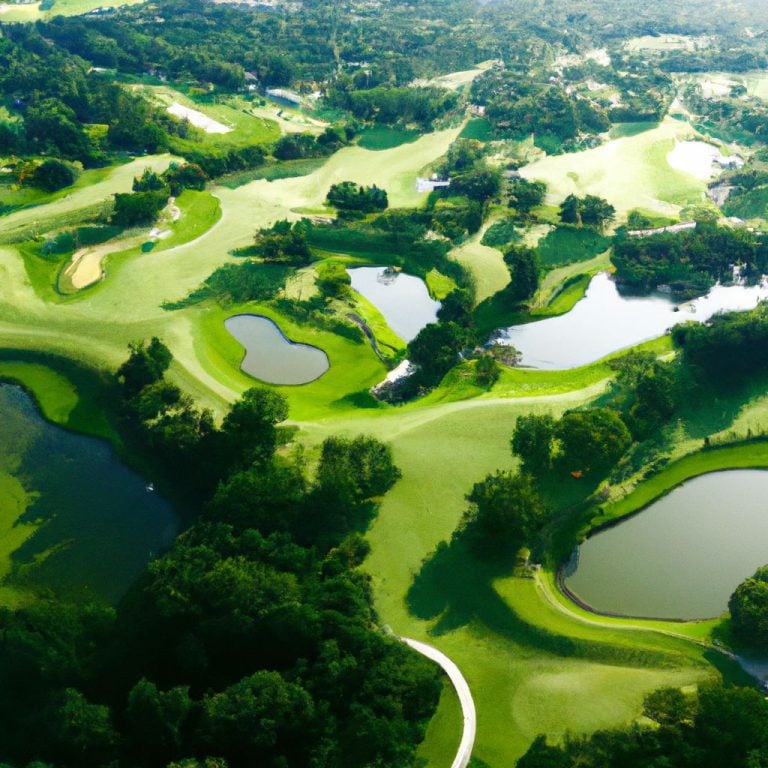Unlocking the Secrets: How to Spin a Golf Ball Like a Pro
Key Takeaway:
- Creating a descending blow by positioning the ball further back in the stance, leaning weight onto the front leg, and picking the club up steeply on the backswing can contribute to achieving backspin in golf shots.
- Choosing the right golf ball is crucial for generating backspin. Soft core golf balls with a lower compression rating are recommended as they have a higher spin potential compared to hard core golf balls.
- Considering green conditions, such as the speed and grass length, is important for achieving backspin. Faster, close-cut surfaces allow for more noticeable spin, while slower greens with long, uneven grass may reduce backspin.
Introduction
Discover the secrets of achieving impressive backspin on your golf shots. In this section, we will explore why backspin is crucial in golf and the various factors that play a role in achieving it. With insights into the importance of backspin and an overview of the contributing factors, you’ll gain valuable knowledge to enhance your golf game. Get ready to take your shots to the next level with precision and control.

the importance of backspin in golf shots
Backspin in golf is essential for control and accuracy. It helps the ball fly straighter and land softer. Bunkers and water hazards are easier to navigate with backspin. It also makes it easier to gauge distances and improve scoring.
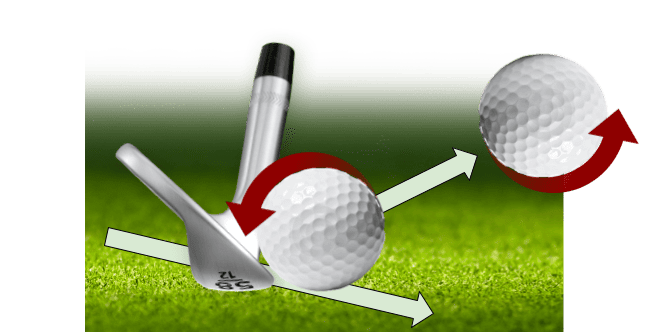
Positioning the ball further back and leaning on the front leg creates a downward strike. Soft core golf balls, multi-layered designs, and faster greens, promote more spin. Lofted clubs, clean grooves, and increased swing speed maximize backspin. Unlocking the science of backspin leads to a satisfying thwack!
the factors that contribute to achieving backspin
To get backspin on golf shots, it’s important to understand the following factors:
- Position the ball back in the stance – this helps create a downward strike.
- Choose the right golf ball – soft core ones with a lower compression rating.
- Pay attention to green conditions – fast greens with close-cut surfaces are best for spin.
- Use lofted clubs – they help with higher elevation and quicker stops.
- Keep the grooves on your clubs clean – this is essential for maximum spin.
- Increase your swing speed – faster swings generate more spin and control.
If you focus on these factors and keep practicing, you’ll be able to get consistent backspin – a must for success on the course. Ready to spin like a DJ?
Creating a Descending Blow for Backspin
Positioning the ball back in the stance, leaning weight onto the front leg, and picking the club up steeply on the backswing – these are the key factors in creating a descending blow for backspin while spinning a golf ball. Mastering these techniques can significantly enhance the backspin on your shots, allowing for greater control and precision on the green.
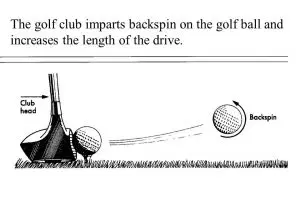
Positioning the ball further back in the stance
For better ball positioning, do these four steps:
- Set your stance: Feet shoulder-width apart and parallel to the target line. This gives a good foundation and enables more power during impact.
- Move the ball back: Mid-irons? Put it just inside the back foot. Shorter clubs? Closer to the lead foot.
- Shift your weight: Move it to the front leg while setting up. Keeps you in control and promotes a steeper angle of attack.
- Take a steeper backswing: Pick the club up steeply. Helps create a downward strike at impact for backspin.
To get backspin, these four steps can help. But dedication and practice are key for mastery and consistent spin on the course.
Leaning weight onto the front leg
To achieve effective backspin in golf, lean weight onto the front leg. This will keep your swing path downward through impact. Positioning the ball further back in the stance helps create a steeper angle of attack for more spin. Picking the club up steeply also helps create a proper swing plane.
Make sure your upper body is centered and avoid swaying during the swing. Plant your feet for stability and equal pressure on both legs at setup.
Tempo & timing are essential. Focus on these to transfer energy efficiently and create spin.
Experiment with various techniques to increase spin and control of shots. Dedicate time to practice for greater backspin consistency.
Picking the club up steeply on the backswing
- Positioning: Put the ball at the back of your stance.
- Weight Distribution: Shift your weight onto your front leg.
- Backswing Movement: Lift & elevate the club on your backswing. Aim for a higher point.
- Impact Point: Make contact with the ball at a downward angle. This will lead to a compressed strike & backspin.
Body posture, swing mechanics & coordination are essential. Swing path & tempo should be taken into account too. A smooth transition between mechanics will help optimize spin potential. By understanding how these factors create a descending blow & applying them consistently, golfers can improve backspin on their shots.
Golf Ball Matters: Even the best swing cannot make up for a ball that spins like a dead fish. Choose the right golf ball for backspin!
Choosing the Right Golf Ball for Backspin
When it comes to achieving optimal backspin in golf, choosing the right golf ball is paramount. In this section, we’ll explore the key factors that differentiate hard core and soft core golf balls, as well as the importance of using soft core balls with a lower compression rating. Additionally, we’ll delve into how the construction of the ball directly impacts its spin potential. So, if you’re looking to enhance your spin game on the golf course, stay tuned for some valuable insights.

Difference between hard core and soft core golf balls
Golf balls can be split into two groups: hard core and soft core. The variation between these two types lies in their cores, which greatly impacts play on the golf course.
To understand the difference, let’s look at their characteristics in the table below:
| Characteristics | Hard Core Golf Balls | Soft Core Golf Balls |
|---|---|---|
| Compression Rating | High | Low |
| Spin Potential | Limited | Increased |
| Feel | Firm | Soft |
| Distance | Long | Reduced |
Hard core golf balls have high compression. This leads to limited spin potential, making it hard to get backspin. They feel firm and go far.
Soft core golf balls have lower compression. This increases spin potential, allowing backspin easier. These balls feel softer and may offer fewer yards.
Golfers should choose the right ball for their desired performance. By selecting a soft core ball with low compression, players can achieve more control of their shots around the green.
Importance of using soft core golf balls with a lower compression rating
Soft core golf balls with a lower compression rating are essential for generating backspin. They are designed with a softer core for increased compression on impact. This imparts more spin and control when it lands on the green.
These balls also lead to more friction between the clubface and the ball. This is vital in creating backspin, as it lets the golfer grip and spin the ball more efficiently. Additionally, the soft core provides a longer dwell time on the clubface, boosting the potential for spin.
Soft core golf balls are great for players with slower swing speeds. They offer optimal compression and spin, while harder golf balls with higher compression ratings can be too rigid, making shots harder to control.
In short, soft core golf balls with a lower compression rating are a must for backspin. They increase compression, friction, and dwell time, while being ideal for players with slower swings.
Impact of the ball’s construction on its spin potential
The construction of a golf ball has a huge effect on its spin potential. Core composition and cover design can both influence spin. Harder cores often produce less spin, as they don’t compress as much upon impact. Lower compression balls are usually softer and provide more spin. Cover material is also essential; urethane covers generate more friction and backspin.
However, ball construction is not the only factor. Swing technique and equipment also matter. Players should think about all these elements together to maximize spin potential.
Finally, the grass can either help you spin the ball, or make it roll away.
Considering Green Conditions for Backspin
When it comes to achieving that desirable backspin on a golf ball, considering the green conditions is essential. The influence of factors such as the green’s speed and grass length on spin cannot be overlooked. Faster, close-cut surfaces tend to allow for more noticeable backspin, while slower greens with long and uneven grass can have a different impact. In this section, we’ll explore how these green conditions play a vital role in achieving that perfect spin on the golf ball.
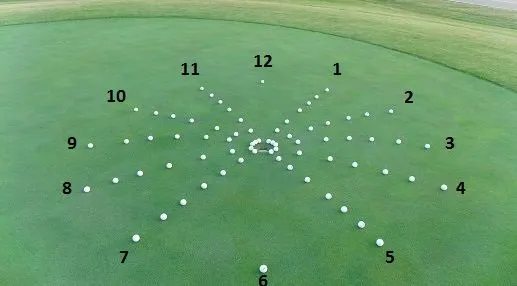
Influence of the green’s speed and grass length on spin
Golfers, want to make your shots excite? Speed of greens & length of grass hugely affect spin. Faster greens grip the ball better – resulting in more spin. Slower greens with longer grass dull backspin. Cut grass closer for optimum spin potential. These factors must be considered – else struggle to achieve spin or miss target. Faster, close-cut surfaces create spin that rivals will envy!
How faster, close-cut surfaces allow for more noticeable spin
Faster greens? Yes please! They create ideal conditions for spin. The shorter grass enables friction between the ball and grass, meaning more backspin. Plus, there’s less air resistance, so you can hit longer carries. Golfers can take advantage of this by adapting their technique.
Shorter grass also helps you hit better contact and control. It’s a win-win situation: you get spin and an impressive display for spectators. Understanding how faster, close-cut surfaces affect backspin is key for golfers striving for improved performance.
On the other hand, slower greens with long grass can get tricky. This makes backspin less noticeable. To avoid this, practice and understand the course conditions. You’ll be ready for the greens!
Impact of slower greens with long, uneven grass on backspin
On slower greens with long, uneven grass, backspin can be affected. The green’s condition and the grass length and texture all have an influence on how the ball interacts with the surface. Trajectory will be higher and less roll when it lands. There’s less friction, and less contact between the clubface and ball. This decreases spin. Uneven surfaces add inconsistency, making it hard to control spin and where it lands.
Golfers must adjust stance or swing technique to better engage with the turf. Use lofted clubs for more elevation. To maximize potential, adapt your approach and improve backspin. With practice, you’ll get consistent results no matter what. Swap out your driver for a lob wedge and watch your ball spin. Explore golf instruction resources for further guidance.
Using Lofted Clubs for Backspin
Lofted clubs are a game-changer when it comes to adding backspin to your golf shots. In this section, we’ll uncover the secrets behind how lofted clubs create more elevation and quicker stops on the green. Get ready to dive into the world of lob wedges and irons, as we explore their effectiveness and provide recommendations for taking your backspin game to the next level. Let’s revolutionize your approach to golfing precision and control.
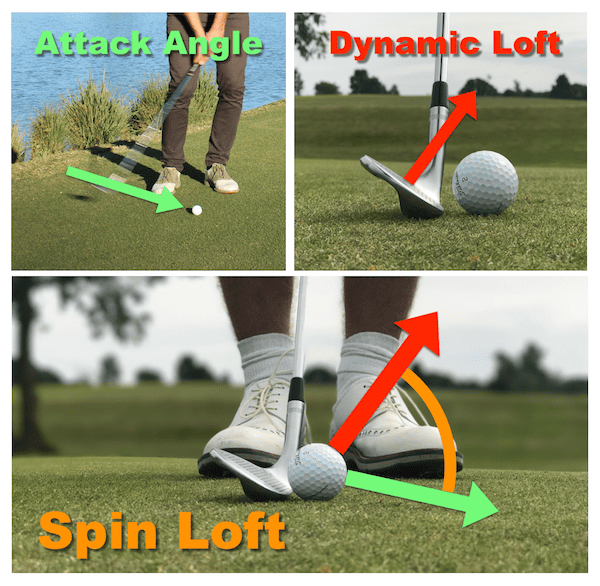
how lofted clubs create more elevation and quicker stops
Lofted clubs in golf, such as lob wedges and irons, are crucial. They create more elevation and quicker stops for the ball. Design and angle of the clubface makes this possible. Higher loft angle imparts more backspin on the ball upon impact. This causes the ball to rise higher and come to a stop faster.
The loft angle refers to the tilt of the clubface in relation to the ground. When open, or tilted back, it creates more loft. So, when a golfer strikes the ball, it gets lifted due to increased backspin.
Backspin generated by lofted clubs also helps produce quicker stops. Ball spins backward as it travels forward. Air resistance counteracts its forward motion. This causes the ball to decelerate rapidly once it lands.
Golfers must understand how lofted clubs work. This allows them to control their shots effectively. By using these clubs strategically, they can land their shots accurately on greens with precise distance control and spin intensity.
Practice and dedication is needed to master this technique. Seeking additional guidance from reputable golf instruction resources can provide valuable insights on how to use lofted clubs effectively for optimal backspin. Don’t miss out on honing this skill!
Recommendation of lofted clubs such as lob wedges and irons
Lofted clubs like lob wedges and irons are great for backspin. They have a higher loft angle, usually over 60 degrees. This allows the ball to fall sharply and creates maximum backspin when it hits. Some irons with a higher loft angle, like approach or pitching wedges, can also create backspin. The lofted face of these clubs helps grip the ball and give it spin in the swing.
It differs from player to player. The best club depends on their playing style, skill level, and how comfortable they are with the club.
When using lofted clubs for backspin, remember that they won’t work for everyone. Each golfer should try different clubs and find the one that works best for them.
Keeping your grooves clean is a must for spin. Just like blocking your ex’s number!
Maintaining Clean Grooves for Backspin
Maintaining Clean Grooves for Backspin is crucial in achieving optimal performance on the golf course. In this section, we will delve into why clean and sharp grooves on the club face are important, the impact of grass or mud interference on groove effectiveness, and valuable tips for cleaning and maintaining club grooves.
With these insights, you’ll enhance your backspin capabilities and improve your overall game. So, let’s dive in and uncover the secrets to mastering this essential aspect of golfing success.
Importance of clean and sharp grooves on the club face
The importance of clean, sharp grooves on the club face in golf cannot be underestimated. These grooves are essential for creating backspin. When clean and sharp, they grip the ball on impact, generating increased friction and spin. Hence, they contribute to improved accuracy and control.
One benefit of clean grooves is they help stabilise the ball’s flight and trajectory. The spin produced by the grooves ensures the ball follows a consistent path. Plus, the condition of the grooves affects contact between the club face and ball. When debris or dirt fills the grooves, it disrupts contact. This reduces spin and affects the distance and accuracy of the shot. Thus, regularly cleaning and maintaining the grooves is vital to ensure backspin performance.
Furthermore, the condition of the grooves impacts other aspects of a golfer’s game. Worn-down or damaged grooves may generate unwanted sidespin or reduce spin control. This affects a golfer’s ability to shape shots or stop the ball quickly, especially on fast greens or long grass.
Pro golfers understand the value of precise groove designs for maximum spin. Manufacturers work hard to create specific groove configurations that comply with golfing regulations whilst optimising backspin potential.
Golf Digest state that clean, sharp grooves can increase spin rates by up to 50 percent compared to worn-out ones. However, grass or mud interfering with these grooves can ruin a golfer’s backspin dreams.
In conclusion, cleanliness and sharpness of the grooves on the club face are essential. They are key for achieving backspin, improving control, accuracy, and overall spin performance. Golfers should clean and maintain their grooves regularly to ensure optimal condition and maximise their potential on the golf course.
Effects of grass or mud interference on groove effectiveness
Grass and mud can affect the grooves on golf clubs. They interfere with their ability to grip the ball and generate backspin. When grass and mud fill the grooves, they create a barrier between the clubface and the ball. This reduces contact and prevents spin.
To prevent this, golfers must clean their clubs and keep the grooves free from debris. Regular cleaning and maintenance will help ensure grip and maximize backspin potential. Therefore, it is important for golfers to pay attention to any build-up of grass and mud in their grooves.
Tips for properly cleaning and maintaining club grooves
If you want to achieve backspin in golf shots, you need to properly clean and maintain your club grooves. Neglecting this can compromise the performance of the club and affect spin potential. Here are some tips to keep your grooves in optimal condition:
- Clean the face regularly: Use a brush or tee after each shot to remove dirt, grass, and debris from the grooves.
- Avoid hard surfaces: Hitting off hard surfaces like cart paths or rocks can flatten the grooves, so it’s best to avoid them.
- Use groove cleaning tools: Invest in tools specifically designed to deep clean the grooves.
- Consider professional cleaning: If there’s significant build-up or damage, have the grooves professionally cleaned or re-grooved.
Clean contact is also essential for spin production. So make sure to add these tips to your regular club maintenance routine – and if you want to spin the ball like a tornado, increase that swing speed!
Increasing Swing Speed for Backspin
Increasing Swing Speed for Backspin: Discover the fascinating link between swing speed and spin application, uncover the impact of faster swings on ball control and landing, and explore techniques that can help you improve swing speed and generate more spin. Unleash the power behind your swing and master the art of creating backspin for greater control and precision on the golf course.
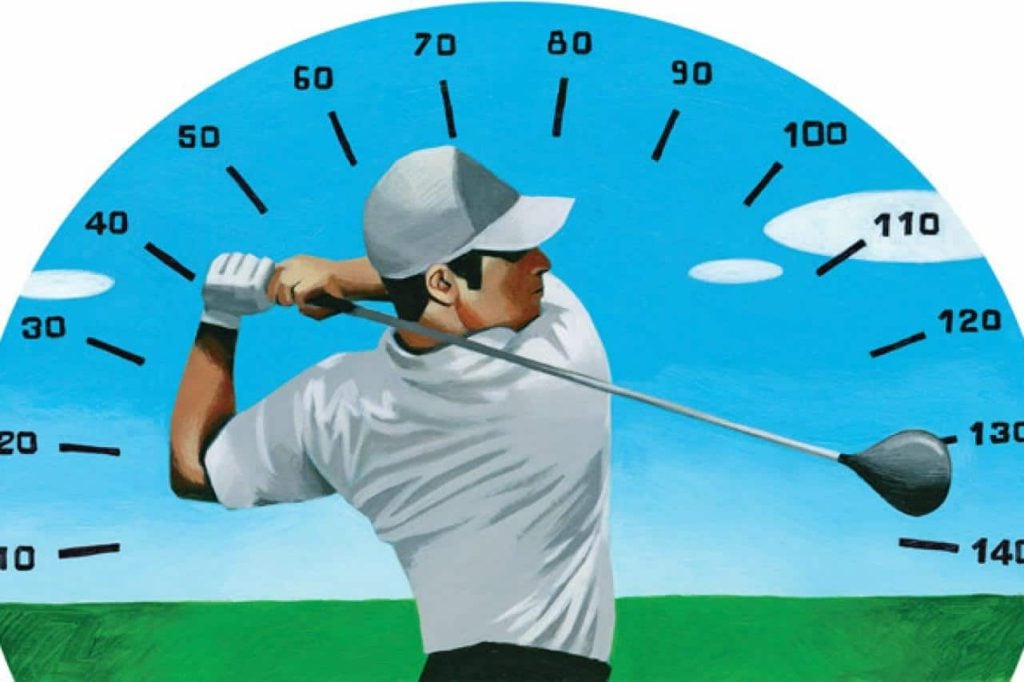
Positive relationship between swing speed and spin application
Swing speed and spin application have a positive relationship in golf. A higher swing speed means more spin on the ball. To gain backspin, there are several key factors to consider.
- Positioning the ball further back in the stance creates a steeper angle of attack.
- Leaning weight onto the front leg during the swing can help too.
- Additionally, picking the club up steeply on the backswing can increase spin.
- Lofted clubs, like lob wedges and irons, generate more elevation and quicker stops. This, combined with increased swing speed, amplifies spin.
- Club grooves are also important. Clean and sharp grooves aid grip, allowing more spin. Interference like grass or mud can reduce groove effectiveness.
- Finally, improving swing speed requires proper technique and conditioning. It affects spin, control and ball landing. Practicing to increase swing speed will generate more consistent backspin.
Impact of faster swings on control and landing of the ball
Golf swings that are faster have a huge effect on the ball’s control and landing. When a golfer speeds up their swing, it affects the spin placed on the ball. This causes the trajectory and behavior when it hits the ground to change. The faster the swing, the more backspin there is. This means the launch angle is higher and the roll distance is shorter.
More rotational velocity is created with a faster swing. This gives the ball more backspin. It flies higher and comes down at a steeper angle, providing better control over its landing spot. Higher spin rates also mean the ball can stop quicker when it hits the ground.
Nevertheless, it’s important for golfers to find the right balance between speed and control. Faster swings can generate more spin, but can be less accurate if done wrong. Golfers must perfect their technique and timing to stay in control while getting the most spin.
Techniques for improving swing speed and generating more spin
Golfers looking to improve swing speed and generate more spin: take note!
Here are some strategies you can implement:
- Position the ball further back in your stance for a steeper angle of attack.
- Shift your weight onto the front leg during the swing – this will improve contact and increase spin.
- Pick the club up steeply on the backswing to generate more speed.
- Proper body movement sequencing is key to optimizing swing speed.
- Don’t forget to engage your core muscles for extra power.
Implementing these strategies will result in greater distance and control – and a unicorn-worthy backspin.
Conclusion
Achieving a satisfying backspin on a golf ball requires a combination of key factors, dedicated practice, and consistent effort. In this conclusion, we’ll recap those key factors and emphasize the importance of practice for mastering backspin. We’ll also provide references to additional golf instruction resources that can help you further improve your skills. So, let’s wrap up this journey to spin mastery and prepare to take your golf game to new heights.
Recap of the key factors for achieving backspin
Generating backspin in golf shots is essential. Here are some key factors to do so:
- Position ball towards the back of stance
- Lean weight onto front leg
- Lift club steeply on backswing
- Use soft core golf balls with low compression
- Use lofted clubs like lob wedges and irons
Creating a descending blow generates backspin. Green conditions also affect it. Faster, close-cut surfaces allow more spin. On slower, long-grass greens, backspin is harder.
Sharp grooves are vital to generate spin. Clean and sharp grooves give better grip on the ball, enabling more spin. Proper cleaning and maintenance are important.
Swing speed also affects backspin. The faster the swing, the higher the spin and control. Improving swing speed helps generate more spin.
In sum, the factors for backspin are: ball position, weight distribution, club selection, ball type, green conditions, clean grooves, and swing speed. By taking these into account, golfers can create the desired backspin.
Importance of practice and dedication for consistent backspin
Practice and dedication are essential for consistent backspin in golf shots. Factors must be combined correctly. To help, position the ball back in the stance. Create a descending blow. Lean weight onto the front leg. Pick up the club steeply on the backswing.
Use the right golf ball – one with a soft core and lower compression rating. Consider the green conditions. Speed and grass length can affect backspin. Utilize lofted clubs like lob wedges and irons for elevation and quicker stops.
Keep the club face clean. Swing speed helps too, but control is key for accurate landing. Acknowledge the importance of practice and dedication. This can improve ability to produce backspin.
Some Facts About How To Spin a Golf Ball:
- ✅ To achieve backspin, position the ball closer to your back foot and swing the club with a steep angle of attack, hitting the ball first and compressing it into the turf. (Source: Team Research)
- ✅ Use a golf ball designed to spin more around the green and a higher lofted club with clean grooves. (Source: Team Research)
- ✅ Higher lofted clubs, such as wedges, are easier to spin compared to lower lofted irons. (Source: Team Research)
- ✅ Keeping your club clean with fresh grooves increases spin rate and control. (Source: Team Research)
- ✅ Professional golfers achieve backspin by compressing the ball into the ground with a descending blow at a high swing speed, using softer golf balls and high-quality clubs. (Source: Team Research)
FAQs about How To Spin A Golf Ball
How can I control the spin of a golf ball?
To control the spin of a golf ball, you can try the following techniques:
- Position the ball closer to your back foot and swing the club with a steep angle of attack, hitting the ball first and compressing it into the turf.
- Use a golf ball designed for more spin, particularly around the green, and a higher lofted club with clean grooves.
- Maintain a high swing speed throughout the shot.
- Keep a strong grip on the club.
What type of golf ball should I choose to create spin?
Choosing the right golf ball can impact the amount of spin you can generate. Softer golf balls generally provide more spin and control compared to harder ones. You can look for golf balls designed specifically for enhanced spin and control.
How can I achieve backspin on a chip shot onto the green?
To achieve backspin on a chip shot onto the green, consider the following factors:
- Create a descending blow by playing the ball slightly further back in your stance and leaning your weight slightly onto your front leg.
- Use a golf ball with a wound construction or a soft core, as these tend to spin more.
- Take into account the green conditions, as spin is more evident on fast, close-cut surfaces.
- Use a lofted club, such as a lob wedge, for a higher ball elevation and quicker stop on the green.
- Maintain clean grooves on your club for optimal spin.
- Increase your swing speed to apply more spin to the ball.
What factors contribute to backspin on a golf ball?
Several factors contribute to backspin on a golf ball, including:
- The angle of attack, which should be steep for more spin.
- The condition and cleanliness of the club’s grooves, which help generate spin.
- The loft of the club, with more loft typically resulting in more spin.
- The type of grass, preferring shorter grass for better contact and spin.
- The swing speed, as faster swings usually generate more spin.
What are some drills or exercises to improve backspin?
There are a few drills and exercises that can help improve backspin:
- The Tee Drill, where you place a tee in front of the ball and try to hit shots without moving the tee, promoting a downward angle of attack.
- The Impact Bag Drill, involving hitting a heavy pillow-like bag to focus on squaring the club face at impact.
- The Weighted Club Drill, which includes using a weighted club or adding weight to build muscle and increase swing speed.
How can I incorporate backspin into my golf game?
To incorporate backspin into your golf game, it is essential to practice and refine your technique. Focus on creating a descending blow, using the correct golf ball and club, considering the green conditions, maintaining clean club grooves, and increasing swing speed. Consistent practice will improve your ability to control spin and enhance overall shot consistency.
